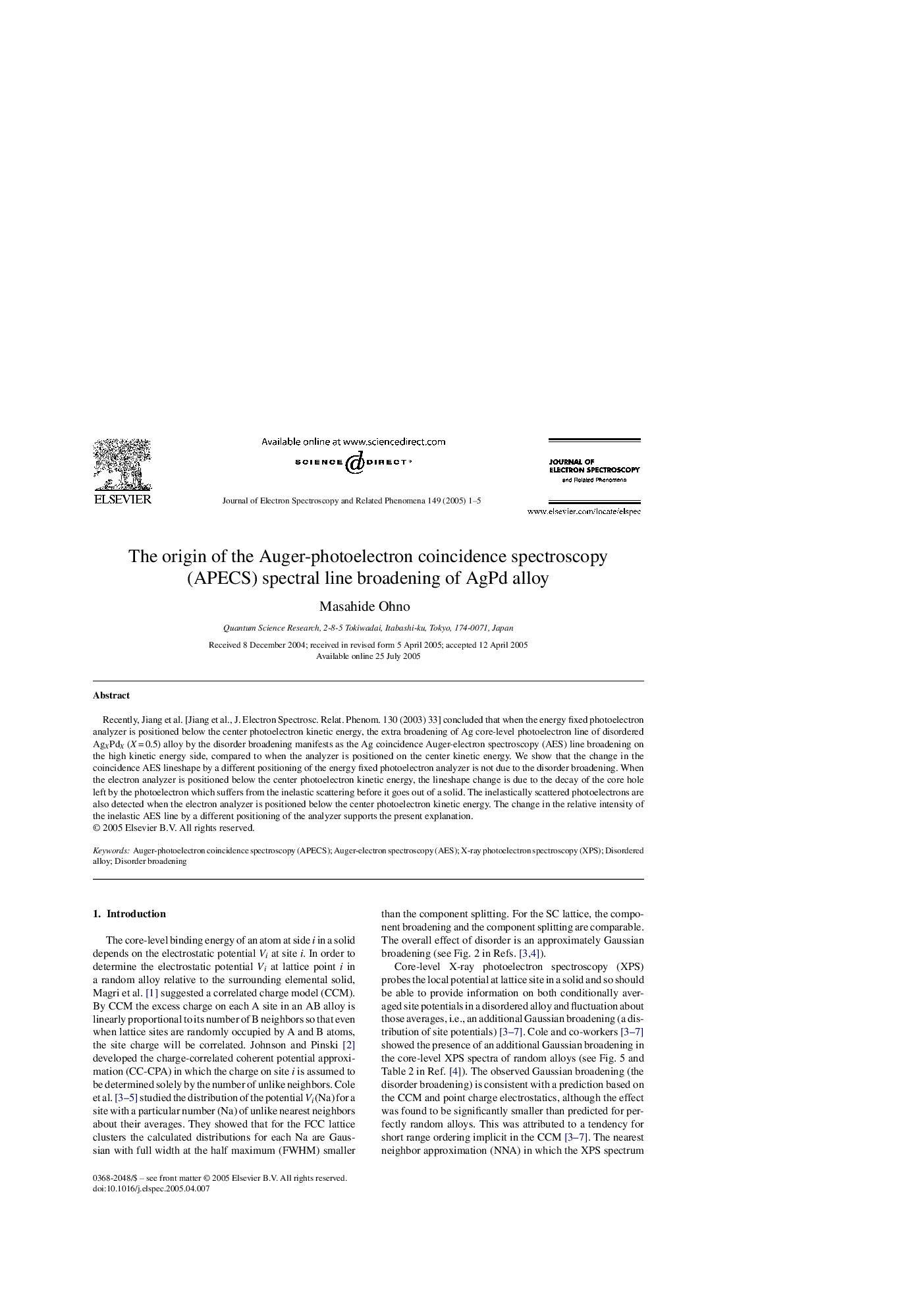| Article ID | Journal | Published Year | Pages | File Type |
|---|---|---|---|---|
| 9585183 | Journal of Electron Spectroscopy and Related Phenomena | 2005 | 5 Pages |
Abstract
Recently, Jiang et al. [Jiang et al., J. Electron Spectrosc. Relat. Phenom. 130 (2003) 33] concluded that when the energy fixed photoelectron analyzer is positioned below the center photoelectron kinetic energy, the extra broadening of Ag core-level photoelectron line of disordered AgXPdX (XÂ =Â 0.5) alloy by the disorder broadening manifests as the Ag coincidence Auger-electron spectroscopy (AES) line broadening on the high kinetic energy side, compared to when the analyzer is positioned on the center kinetic energy. We show that the change in the coincidence AES lineshape by a different positioning of the energy fixed photoelectron analyzer is not due to the disorder broadening. When the electron analyzer is positioned below the center photoelectron kinetic energy, the lineshape change is due to the decay of the core hole left by the photoelectron which suffers from the inelastic scattering before it goes out of a solid. The inelastically scattered photoelectrons are also detected when the electron analyzer is positioned below the center photoelectron kinetic energy. The change in the relative intensity of the inelastic AES line by a different positioning of the analyzer supports the present explanation.
Keywords
Related Topics
Physical Sciences and Engineering
Chemistry
Physical and Theoretical Chemistry
Authors
Masahide Ohno,
